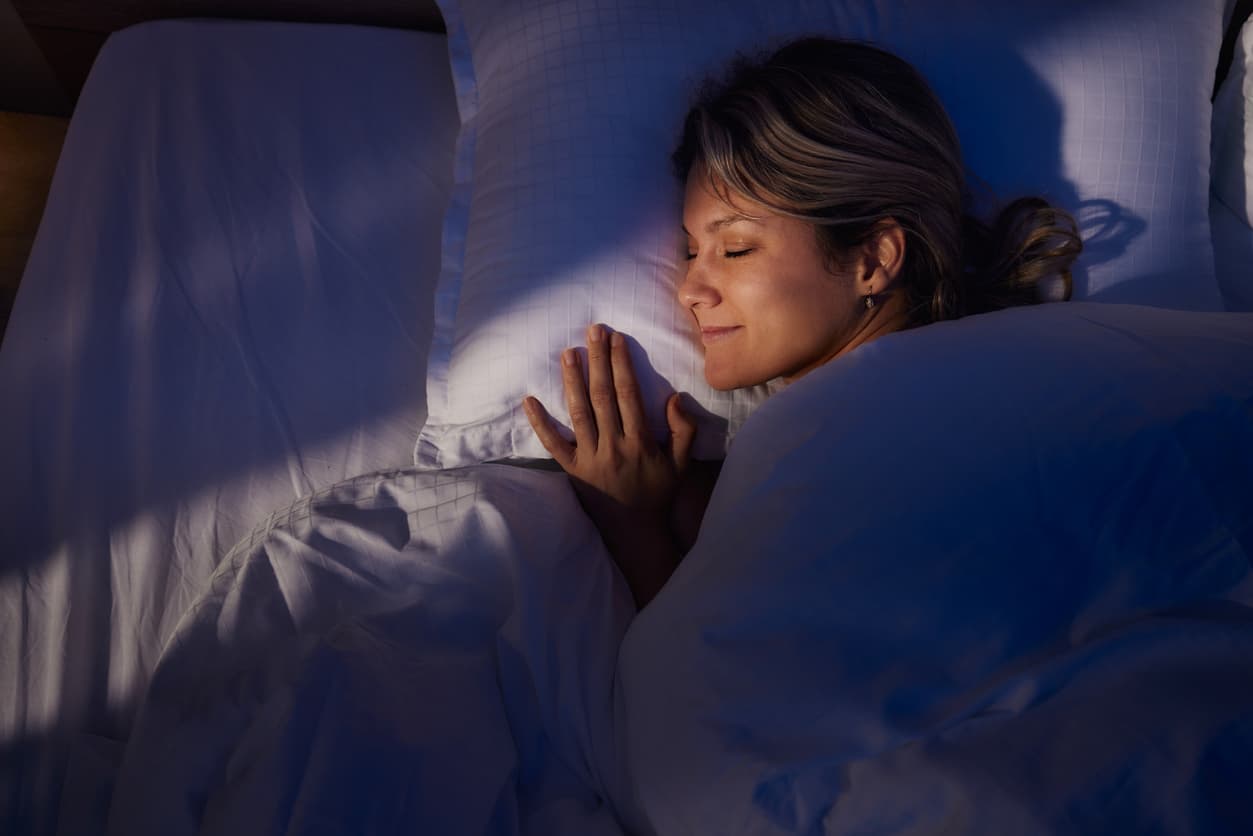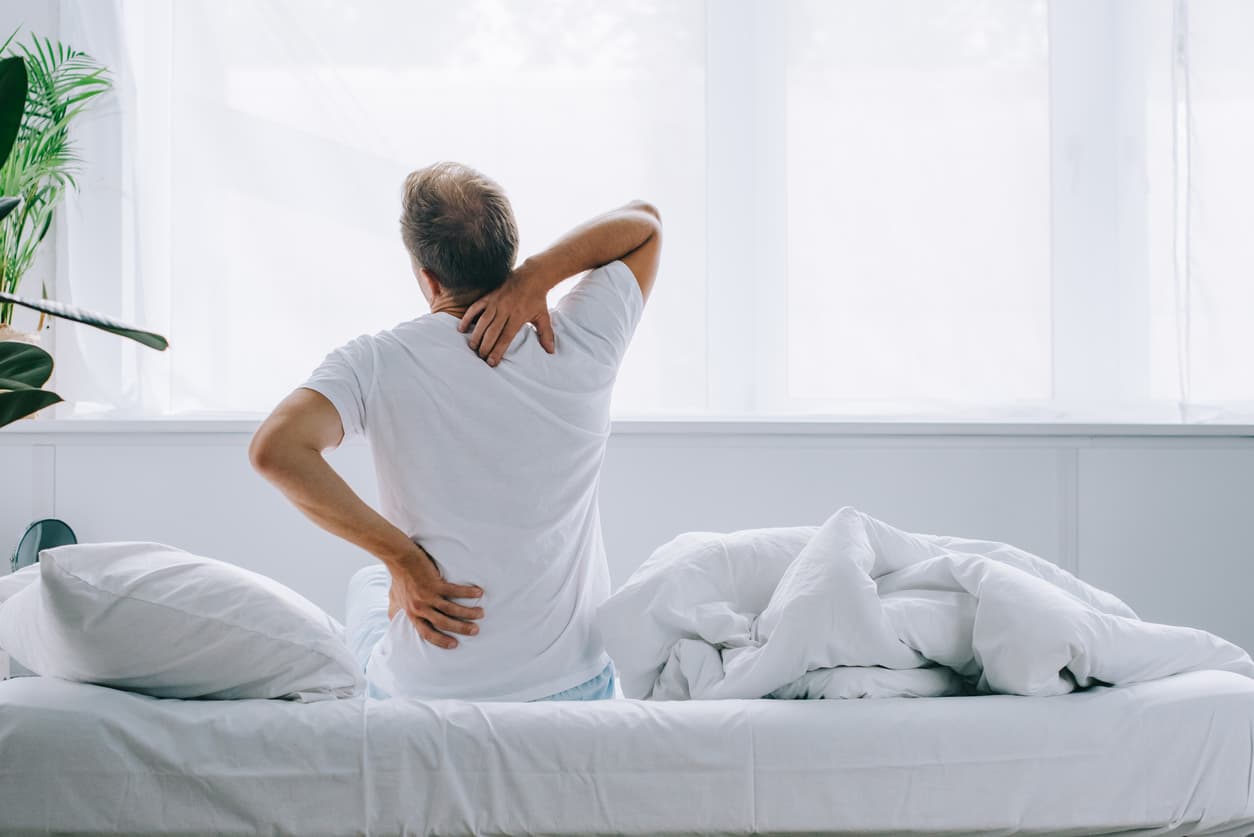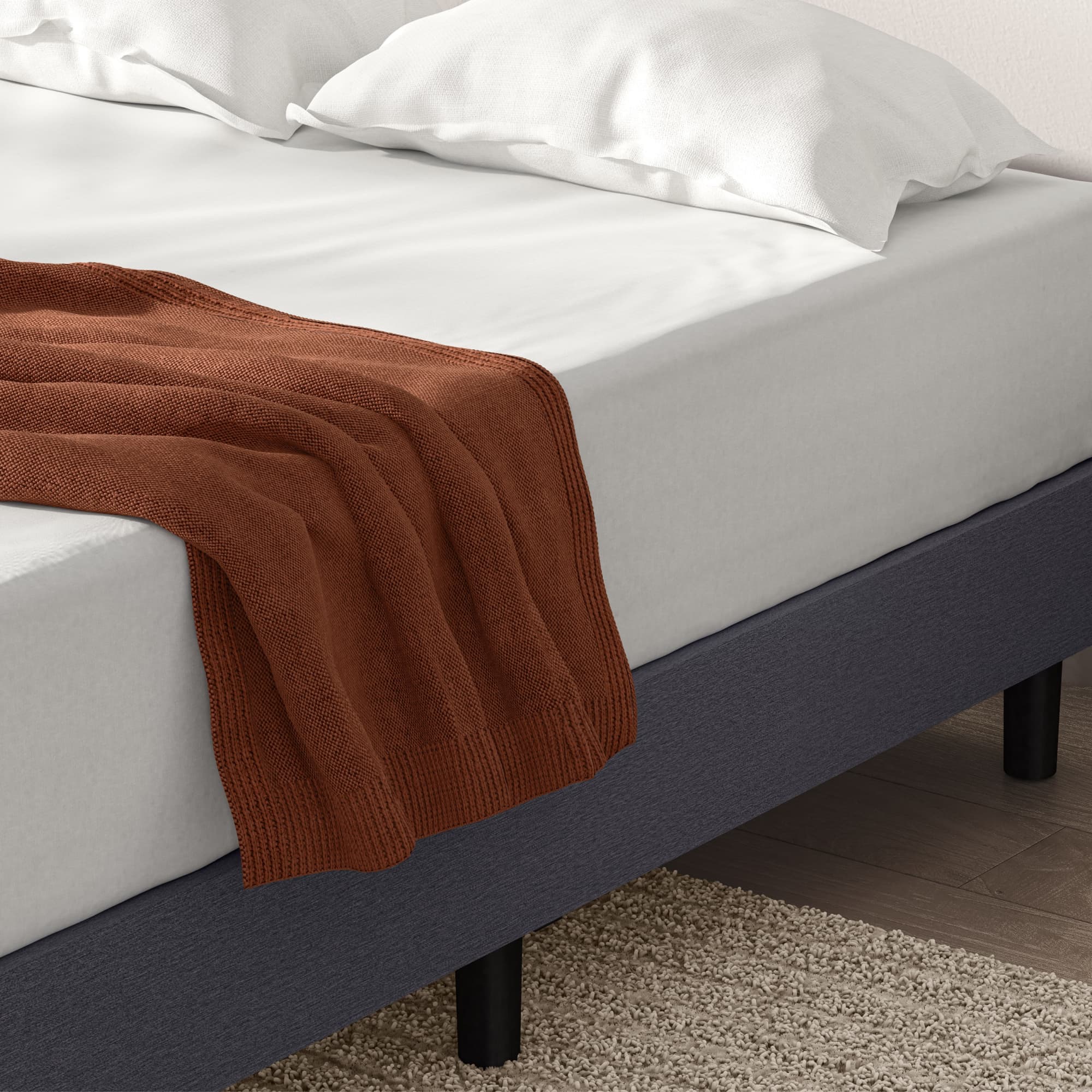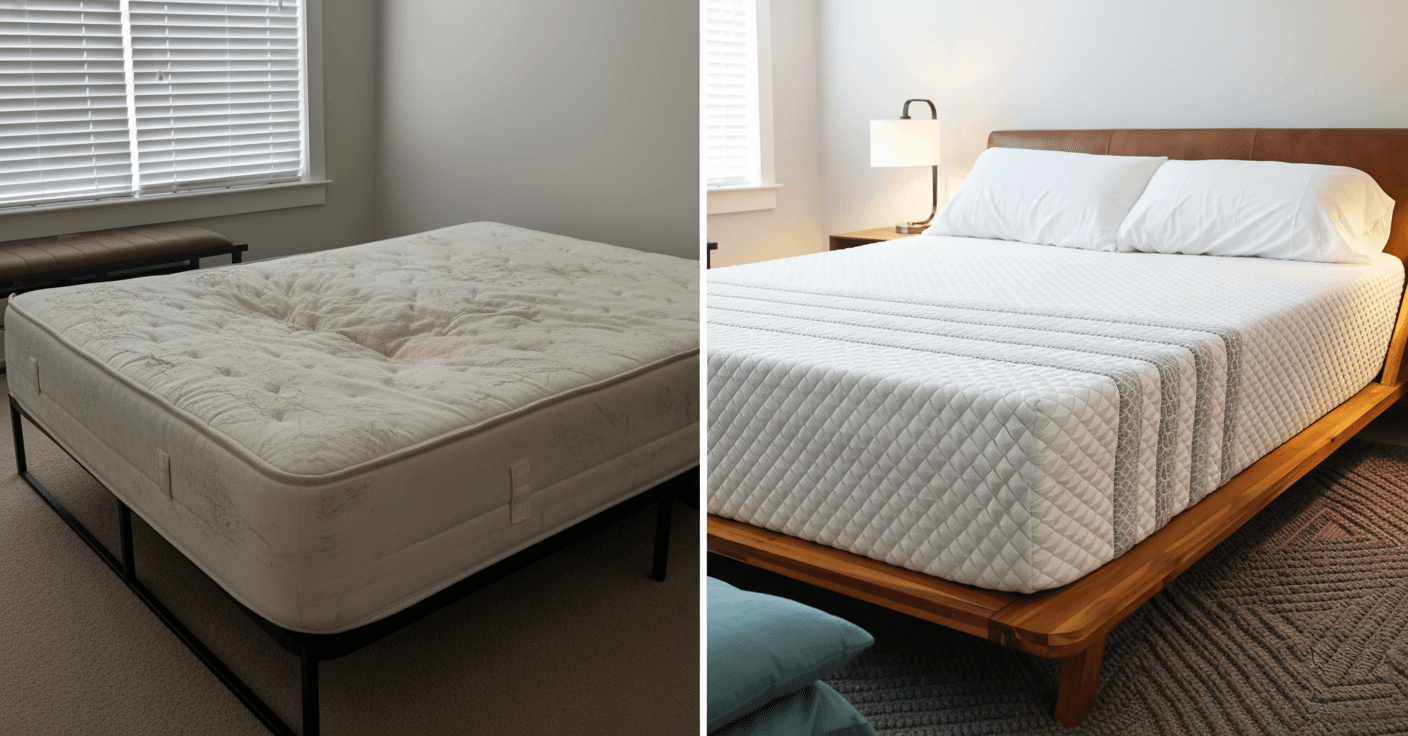Allergy sufferers often spend their nights itching, sneezing, and popping antihistamines like they’re candy—basically, the exact opposite of a good night's sleep. Allergens like dust mites, pet dander, and pollen often accumulate in bedding and indoor air, worsening symptoms at night.
If allergies are disrupting your nights, making it harder to fall and stay asleep, here are some actionable tips to help you kick nighttime allergy symptoms to the curb.
Why do allergy symptoms get worse at night?
It’s a terrible trick of fate that many allergy sufferers experience intense nightly symptoms. Allergies and sleep do not get along. But there are reasons for this phenomenon, and allergy research shows that certain types of allergies, such as allergic rhinitis (a.k.a. hay fever), increase disruptive sleep symptoms. So let’s look at why allergies affect sleep so intensely.
Reason #1: Lying down = nasal congestion worsens
Gravity is your best friend when it comes to nasal congestion. When sitting, standing, and walking upright, the forces of gravity help drain your sinuses (yep, it’s as icky as it sounds). But when you lie down, gravity starts working against you, making it harder for your clogged sinuses to drain. The result is excess mucus buildup and congestion.
Reason #2: Indoor allergens accumulate in the bedroom
It may not seem like the bedroom is a high-traffic area of the home, but we spend hours sleeping and resting there every single day. This means that indoor allergens like dust mites and pet dander have plenty of opportunity to accumulate.
Dust mites aren’t your standard creepy crawly house dwellers. These microscopic, insect-like creatures are invisible to the naked eye, and they don’t bite or sting, which is very considerate.
Instead, they consume dead human skin cells and, via their feces, urine, and decomposing bodies, help make dust. Gross, right? Maybe that dust behind the TV that no one can see is actually worth cleaning up after all.
These little dust machines trigger inflammation in your nasal passages and set off allergies if you have a sensitivity to them. Mites thrive in bedding and upholstery and generally anywhere that humans spend a lot of time. So, sorry to say, extermination isn’t really an option.
Pet dander is another factor, especially if your pet sleeps in bed with you or in the same room. Dander refers to the microscopic dead skin flakes that all pets produce. While some breeds or types of animals may shed more or less dander, there’s really no avoiding it altogether. These little flakes linger on carpets, furniture, and bedding and bring about severe symptoms for those with even a mild pet allergy .
Reason #3: Pollen and outdoor allergens follow you inside
Allergens like pollen stick to hair, skin, and clothes, transferring to pillows and sheets. It’s also pretty difficult to pollen-proof your residence. The fine powder floats in through tiny cracks and gaps in walls.
Those with seasonal allergies can physically feel the effects of pollen sneaking into the house. Have you ever woken up with your eyes irritated and swollen? Sneezed yourself into a restless sleep in the springtime? That's the increased pollen count at work. Unfortunately, studies show that the time of day when allergies are at their worst is late afternoon to bedtime.
So, if you've been feeling more itchy or sneezy right before bed, it’s not all in your head. Bedtime is an allergy attack hour.
How to reduce allergy symptoms for better sleep
If coughing and sneezing aren’t an ideal part of your nighttime routine, here’s how you can keep those allergens out of your bedroom and get the rest you need.
Control your sleeping environment
It's impossible to control every aspect of your sleeping environment. Upstairs neighbors are always going to vacuum at 1 AM. The neighborhood dogs will joyously howl way too early in the morning. However, there are things that you can do inside your bedroom that help reduce allergy symptoms and lead to better sleep.
Source control
The most effective way to control indoor air pollution is via source control . This means controlling the sources of allergies by preventing dust and pollen accumulation in the first place, and it starts with cleaning your mattress, floorboards, vents, bedding, and other areas where they like to hide. This source control process will help you keep dust mites, pet dander, and pollen under control.
Air purification
Next, set up an air purifier that comes with a HEPA (high efficiency particulate air) filter. These filters remove particulate matter from the air without emitting dangerous ozone. Air purifiers can capture 99.97% of airborne particles as small as 0.3 microns (µm), including dust, pollen, mold, and bacteria. They are specifically rated for 0.3 µm particles because these are the most difficult to trap, so their efficiency in capturing other particle sizes is even higher.
Humidity levels
You should also pay attention to indoor humidity levels and adjust as needed. Is it too dry? Use a humidifier to prevent dry nasal passages from cracking and becoming uncomfortable. Too humid? Use a dehumidifier to prevent mold and mildew growth and help you breathe easier.
Ventilation
Ventilation is key to avoiding the buildup of allergens in the air, but as a person with allergies, you also need to keep your windows closed to block pollen and outdoor allergens from getting in. This means we need to get creative when it comes to proper bedroom ventilation.
Keep your bedroom door open and use your air purifier to help promote air circulation and ventilation within the room. A ceiling or tower fan can also be a great ventilation booster.
Bedtime hygiene habits to reduce allergies
You're undoubtedly a squeaky clean sleeper, but these specific habits do a lot to reduce sleep allergies.
Shower before bed: This may not be your normal routine, but showering removes pollen and dust from your skin. Even the simple act of washing off with water can make a big difference, especially during pollen season.
Wash your hair and face: Pollen clings to your hair, eyebrows, and any other facial hair. If you don't have time for a shower, then a quick brush of your hair and wash of your face will prevent pollen from transferring to your pillow.
Change clothes before bed: Even sitting on the edge of your bed in your outside clothes can transfer loads of dust and pollen to your bedding, giving you a runny nose all night. So change into your sleep clothes before touching your bed—or change into different sleep clothes if you’re rocking the WFH pajamas look.
Medication and home remedies
Allergies can worsen or even cause sleep disorders like obstructive sleep apnea, and those with intense seasonal allergies can actually feel the pollen count rising. For these allergy sufferers, allergy medications and home remedies can make a huge difference in sleep quality.
Take an over-the-counter allergy medication: Antihistamines like Zyrtec, Claritin, and Benadryl block and mitigate histamines, the chemical compound your immune system releases in the presence of an allergen. But keep in mind that some allergy meds have to build up in your system before they become effective, while others start working immediately.
Use a neti pot or saline spray: These methods flush out allergens from sinuses and can temporarily relieve a runny or stuffy nose. Using the flush method takes practice, so take it slow and follow the included instructions.
Try steam therapy: The relief from steam therapy is unmatched. The steam helps to loosen mucus and soothe your airways, opening the sinuses and reducing congestion. Plus, you don’t need any special equipment—just fill a bowl with steaming hot water, keep your face about a foot from the surface, drape a towel over your head, and breathe deeply for 2–5 minutes.
How your bedding impacts allergies
Your mattress, pillows, and blankets can harbor allergens like dust mites, pet dander, and mold spores. Poor-quality, old, or unprotected bedding can worsen symptoms, even if you follow all the other allergy tips. So it's important to follow specific maintenance and cleaning practices when it comes to your bedding.
Best practices for mattress care and allergy prevention
Keep your mattress and bedding in tip-top shape with these best practices for allergy prevention.
Wash sheets and pillowcases weekly: Use hot water (130°F+) to kill dust mites. Different sheets and pillowcases will have different wash requirements, so double-check the manufacturer’s instructions.
Use a mattress protector or encasement: This prevents allergens from settling into the mattress, which is vital because it’s a little challenging to toss your mattress in the wash.
Vacuum your mattress monthly: This removes dust and allergens from the surface and keeps them from embedding themselves deeper.
Replace your pillow every 1-2 years: Old pillows are a dust mite paradise. Plus, even the best pillow will experience a little wear and tear after a year or two.
Upgrade your sleep: Leesa’s solutions for allergy sufferers
While allergens like to hide in every nook and cranny, the tips we’ve shared will give you a fighting chance against dust mites, pollen, pet dander, and more. But if you’re noticing more and more sleep disturbances despite following these allergy mitigation tips, it may be your mattress. Once those allergens work their way into your bed, it’s hard to get rid of them.
If you have a newer mattress that you still love, our Ultra Cool Mattress Protector or Mattress Encasement can create a barrier between you and those pesky allergens.
But if your mattress is old and filled with icky allergens, it’s probably time for an upgrade to something a little fresher, like our Leesa Natural Hybrid Mattress. This luxurious mattress is made with natural, hypoallergenic materials for cleaner, healthier sleep.
Shop Leesa’s sleep solutions for better allergy relief, so you can get the high-quality sleep you deserve.



